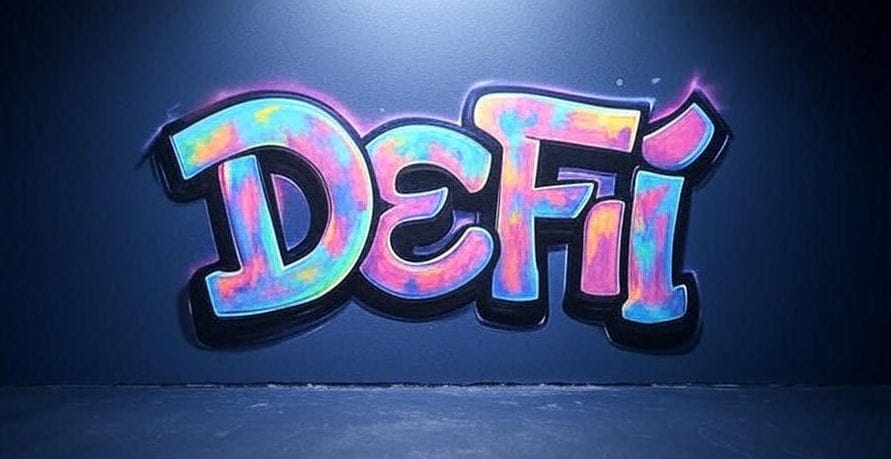Understanding DeFi: How Decentralized Finance Works, from Stable-coins to Dexes
Ever wondered if there's a way to handle your finances without all the usual bank visits and complicated paperwork? Well, Decentralized Finance, or DeFi, is essentially a whole new financial world built on blockchain technology. Think of it as an ecosystem of digital financial services that you can tap into using just a crypto wallet and some digital currency. It's designed to mimic, and often improve upon, traditional financial services, bypassing the need for conventional banking visits and complicated procedures.
Getting Started with DeFi Getting started is surprisingly straightforward. All you generally need is a crypto wallet and some cryptocurrency. With just a few clicks on your computer or phone, you can access a range of financial services – provided, of course, that such services are allowed where you live.
What Can You Actually Do in DeFi? So, what can you actually do in this digital financial world? As of 2022, the most popular activities are lending and borrowing, staking, and using liquidity pools. While exciting new areas like mortgages and insurance are still just beginning to emerge (blockchain-based insurance, for example, is mostly confined to protecting certain crypto deposits and investments right now), the current offerings are incredibly useful.
Let's look at some of the main ways people are using DeFi:
- Crypto Borrowing and Lending: This is one of the biggest draws in DeFi. Imagine lending your crypto to someone else and earning interest, or borrowing crypto yourself. The cool part? These loans are usually instant and don't involve credit checks like traditional banks. However, you'll almost always need to put up some collateral first. It sounds great, but remember, there are risks, and you need to be cautious to avoid losses.
- Decentralised Exchanges (Dexes): Think of these as digital trading floors where you can swap cryptocurrencies directly with other users, without a middleman like a traditional exchange. These swaps happen securely using 'smart contracts'. Some Dexes use something called Automated Market Makers (AMMs) and liquidity pools. This basically means a 'robot' constantly offers you prices for trades, and anyone can contribute their crypto to these pools to help facilitate trades and earn fees – essentially becoming a 'market maker' themselves.
- Yield Optimization (or Yield Farming): This is a more advanced strategy for those looking to maximize their returns on crypto. It involves using special decentralized applications (DApps) that automatically find the best ways to earn interest from various reward pools, staking opportunities, and other interest-bearing products.
- Other Services: Beyond these popular services, DeFi also supports payments, staking (where you 'lock up' your crypto to support a network and earn rewards), and simple digital asset swaps.
The Super Important Role of Stable-coins You might be thinking, "Isn't crypto super volatile?" And you'd be right! That's where stable-coins come in – they're absolutely vital to DeFi. A stable-coin is a type of cryptocurrency designed to hold a steady price, usually by being 'pegged' to something more stable, like the US dollar or even gold. Imagine taking out a loan with Bitcoin as collateral; if Bitcoin's price suddenly plummets, your lender might get worried and ask for more collateral or even sell your Bitcoin. But if you use a stable-coin as collateral, that worry largely disappears because its price is much more consistent. This need for price stability extends across most crypto transactions, making stable-coins a cornerstone of the DeFi world.
Where Does DeFi Live? So, where can you actually find these DeFi products? Historically, Ethereum has been the primary hub for DeFi. However, the landscape has grown enormously, and you'll now find many other blockchains hosting their own vibrant DeFi ecosystems. Basically, if a network can handle 'smart contracts' (which we'll explore later), it can probably host DeFi applications.
Important! Navigating DeFi Safely Now, while DeFi offers exciting possibilities, it's absolutely crucial to proceed with caution. Finding trustworthy DeFi platforms demands a lot of your own research. While online forums and websites can offer information, you need to be extremely careful and always double-check the safety and legitimacy of any DeFi product you come across. This diligence is key to protecting yourself from potential risks and financial losses.
Conclusion
DeFi represents a dynamic ecosystem of financial applications built on blockchain networks, offering services such as borrowing, lending, payments, staking, and digital asset swaps via decentralized exchanges (DEXes). Accessing these services typically requires a crypto wallet and some cryptocurrency, providing an alternative to traditional banking with instant settlements and often without credit checks. Key to navigating the volatility of cryptocurrencies within this space are stable-coins, which are designed to maintain price stability, often by being pegged to assets like the US dollar or gold, thereby alleviating concerns for collateral in transactions like lending.
While DeFi has seen significant growth in areas like lending, borrowing, and liquidity pools, and offers advanced strategies like yield optimization (or yield farming), it's important to remember that emerging use cases like mortgages and insurance are still in their early stages. Though Ethereum has historically been the primary home for DeFi, many other smart contract-enabled blockchains now host thriving DeFi ecosystems. However, engaging with DeFi requires extensive research and extreme caution, as users must carefully verify the safety and credibility of any protocols to mitigate potential risks and losses.

